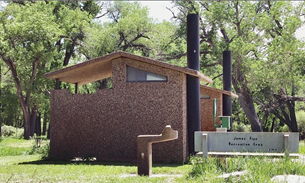Kipp water system shutting off for upgrade
Organization:
Media Contact:

Montana (BLM Photo by Jonathan Moor)
(FERGUS COUNTY, Mont.) – Campers will have to bring their own water to the James Kipp Recreation Area starting July 8, 2018.
The potable water system at Kipp will be replaced with a complete new potable water system. The new water system will have approximately one mile of new pipe, control valves and free hydrants.
The existing well pump, well house, chlorination injection system and Fish Cleaning Station building will be used in the new system. A new buried contact tank for chlorinated water will be installed. A chlorine analyzer will be added to the system at the Fish Cleaning Station near the end of the water line. There will also be some minor electrical work and additions to an existing drain field at the Fish Cleaning Station.
Upgrades to the water system are scheduled to occur over about a 10-day period. The water system will be shut down during construction and no water will be available to the public until the work is completed.
The campground, boat ramp and day use areas will be open during the work as much as possible. Public vehicle access on the main road and the boat ramp road will be maintained throughout the construction timeframe. Temporary disruption of vehicle access may occur when workers are burying new waterline across roadways.
“Ensuring Americans have access to their public lands is important to the BLM,” explained Upper Missouri River Breaks National Monument Manager Josh Chase. “That’s why we are keeping Kipp open throughout the upgrade work.”
Anyone using the Kipp area should watch out for equipment moving around during the upgrade.
The BLM manages about 245 million acres of public land located primarily in 12 western states, including Alaska, on behalf of the American people. The BLM also administers 700 million acres of sub-surface mineral estate throughout the nation. Our mission is to sustain the health, diversity, and productivity of America’s public lands for the use and enjoyment of present and future generations.
